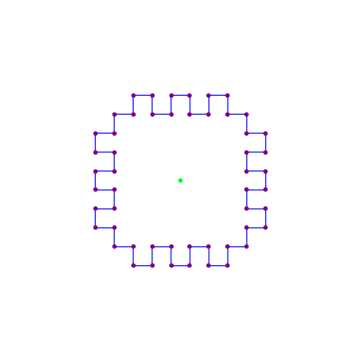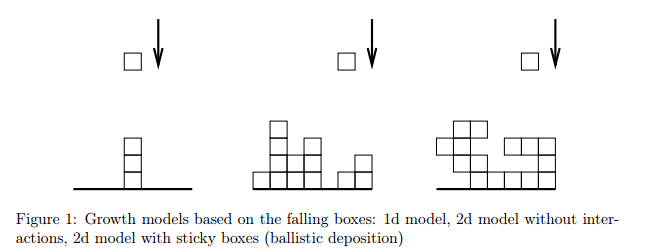Let $P$ be a simple polygon defined by $n$ unit-length segments connecting lattice points of $\mathbb{Z}^2$. I have two operations that preserve the perimeter of $P$. The first is the "pop" of a corner either inward or outward; the second is pushing in a 3-edge "tab" at one spot and immediately pushing out a tab at another. Both operations are only applied if they preserve simplicity (non-self-intersection):

My question is:
Q. What is the limit shape of $P$ as $n \rightarrow \infty$ and the operations are applied randomly for sufficiently many iterations?
I realize this question is imprecise. Perhaps the limit shape depends on the frequency balance between the two operations, which I have not specified. In addition, I am not quite sure how to best to describe a shape. But even an intuitive answer would be useful: Will the shape tend toward a convex-like blob, or toward a more spidery shape? (My guess is the latter.)
I was hoping to get a sense with small experiments as below, but it may require much larger $n$ and many more iterations for a clear pattern to emerge. I would appreciate any help in sharpening the question, answering it in some form, or pointers to related literature that could shed light on the issue. Thanks!
Animation of 200 operations, starting from a crenellated square. The green dot is the centroid of the vertices.


